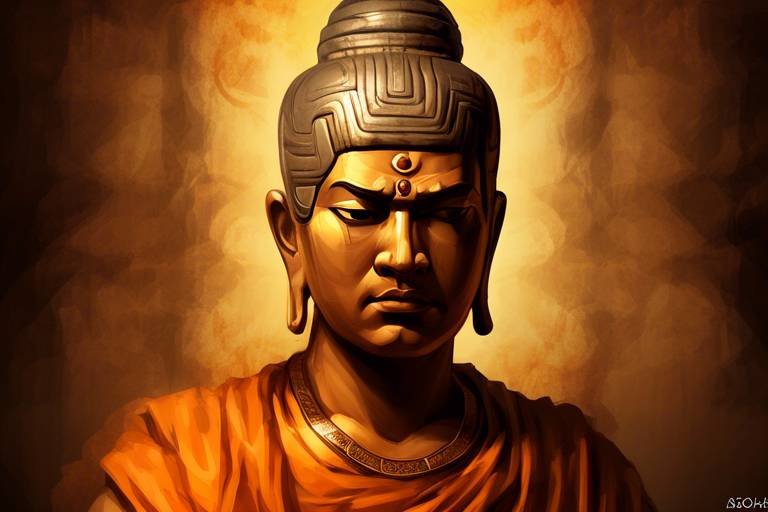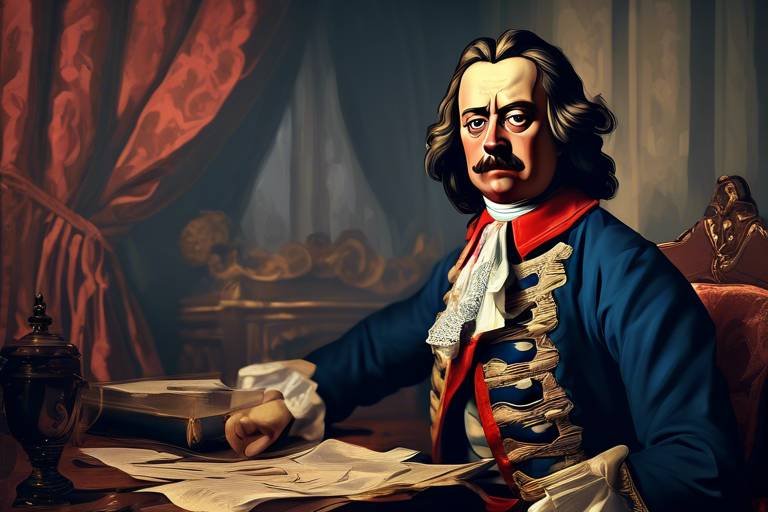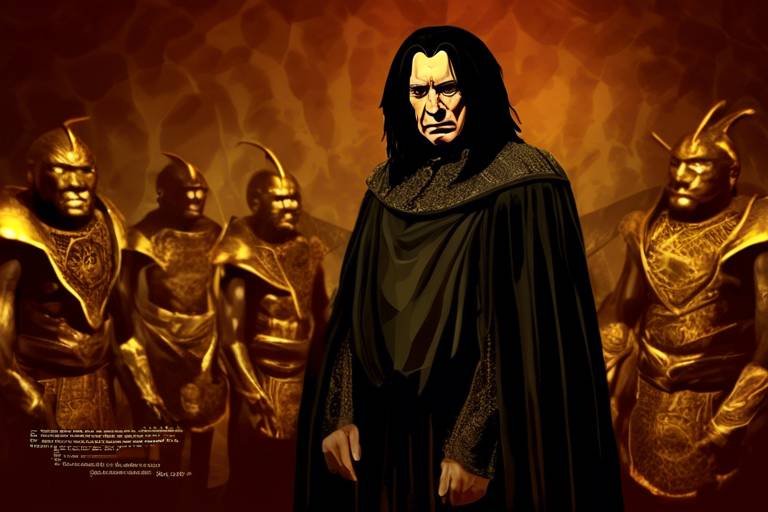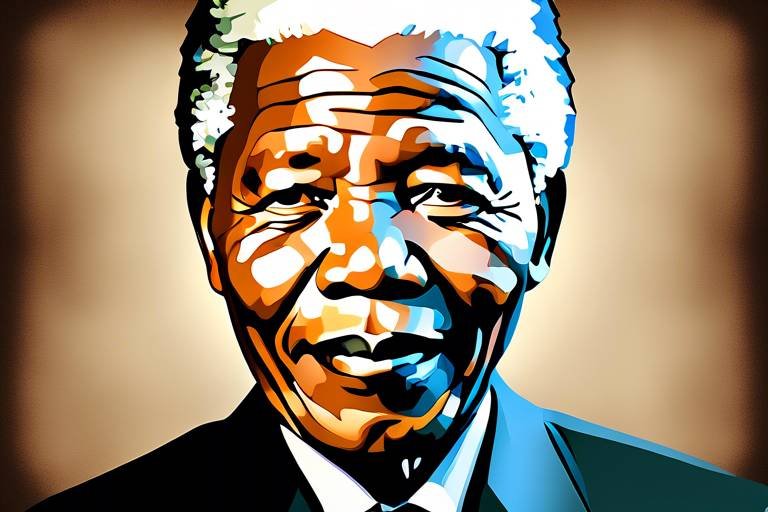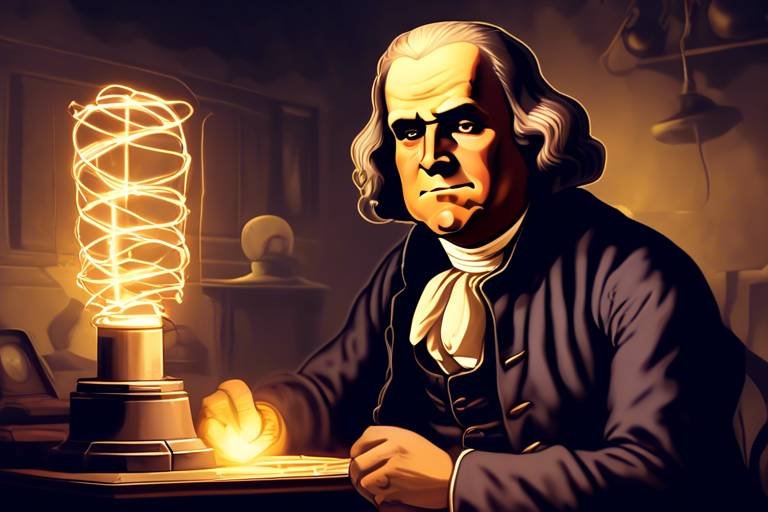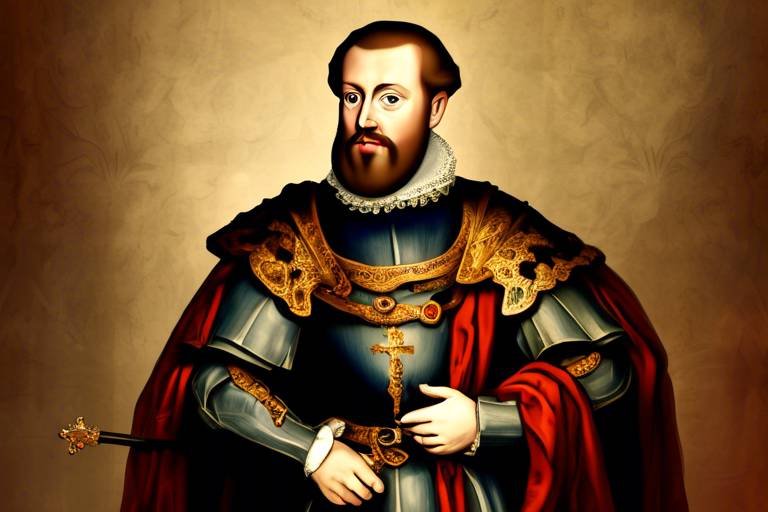Ashoka the Great: The Buddhist Monarch
Ashoka the Great, also known as Ashoka the Wise, was a remarkable Indian emperor who left an indelible mark on history through his embrace of Buddhism and promotion of peace and social welfare. His reign, characterized by a profound transformation in governance and policies, stands as a testament to the enduring influence of his enlightened principles.

Early Life and Rise to Power
Exploring the life and reign of Ashoka, the Indian emperor who embraced Buddhism and promoted peace and social welfare across his empire, leaving a lasting impact on Indian history and culture.
Ashoka, originally named Asoka, was born around 304 BCE to Emperor Bindusara and Queen Dharma. His upbringing in the Mauryan royal family exposed him to the intricacies of court politics and administration from a young age. Despite facing fierce competition from his siblings for the throne, Ashoka's intelligence and strategic acumen set him apart. Upon his father's death in 273 BCE, Ashoka ascended to the Mauryan throne after a series of power struggles and political maneuvers. His early conquests in the Deccan region and the annexation of Kalinga solidified his position as one of the most powerful emperors in Indian history.
After the brutal Kalinga War in 261 BCE, Ashoka experienced a profound transformation. Witnessing the devastation and loss of life in the war deeply affected him, leading to his embrace of Buddhism. This pivotal moment marked a significant shift in Ashoka's approach to governance and his treatment of his subjects. He adopted the principles of ahimsa (non-violence) and compassion, incorporating Buddhist teachings into his policies and edicts to promote social welfare and harmony within his empire.
Ashoka's rock edicts and pillars served as tangible expressions of his commitment to dhamma and social justice. These inscriptions, written in Prakrit, Greek, Aramaic, and other languages, conveyed his moral and ethical teachings to the diverse population of his empire. The pillars, adorned with the famous lion capital, symbolized Ashoka's authority and benevolence, spreading his message of peace and righteousness throughout the land.
Driven by his newfound faith, Ashoka embarked on a mission to propagate Buddhism beyond the borders of his empire. He sent emissaries and missionaries to neighboring kingdoms and regions, spreading the teachings of the Buddha far and wide. Through his diplomatic efforts and patronage, Ashoka played a pivotal role in the global dissemination of Buddhism, laying the foundation for its expansion into Central Asia, Southeast Asia, and beyond.
Ashoka's legacy as a Buddhist monarch left an indelible mark on Indian history and the development of Buddhism. His patronage of Buddhist architecture, including the construction of stupas and monasteries, enriched the cultural landscape of his empire and beyond. The enduring influence of Ashoka's principles of compassion and tolerance continues to shape the moral fabric of society, inspiring generations to uphold the values of peace and social harmony.
One of Ashoka's most enduring legacies is his architectural patronage in support of Buddhism. The construction of magnificent stupas, such as the Great Stupa at Sanchi, and the establishment of monastic complexes exemplified his dedication to the propagation of the faith. The iconic Ashoka Pillars, with their intricate carvings and inscriptions, stand as testaments to his grandeur and devotion to Buddhism, serving as beacons of spiritual enlightenment for centuries to come.
Despite his profound impact on Indian history, Ashoka's reign remains a subject of historical debate and interpretation. Scholars continue to grapple with the complexities of his policies and the extent of his commitment to Buddhist principles. The historiographical controversies surrounding Ashoka's legacy highlight the nuanced nature of his rule and the challenges of reconciling historical accounts to paint a comprehensive picture of his reign.
In contemporary times, Ashoka's legacy continues to be revered and celebrated in India and beyond. His emblem, the Ashoka Chakra, adorns the national flag of India, symbolizing his enduring influence on the country's ethos. Leaders and movements inspired by Ashoka's principles of non-violence and social welfare strive to emulate his example, fostering a legacy of peace and unity that transcends time and borders.
1. What led to Ashoka's conversion to Buddhism after the Kalinga War?
2. How did Ashoka's rock edicts and pillars convey his principles of dhamma?
3. What role did Ashoka play in the spread of Buddhism beyond India?
4. How has Ashoka's legacy influenced contemporary leaders and movements?

Buddhist Conversion
Exploring the life and reign of Ashoka, the Indian emperor who embraced Buddhism and promoted peace and social welfare across his empire, leaving a lasting impact on Indian history and culture.
Detailing Ashoka's upbringing, accession to the Mauryan throne, and the conquests that led to his reign as one of the most powerful emperors in Indian history.
Ashoka's conversion to Buddhism was a pivotal moment in his life, occurring after the brutal Kalinga War. This transformation not only changed his personal beliefs but also revolutionized his approach to governance. By embracing Buddhism, Ashoka adopted a path of non-violence, compassion, and social welfare, shaping his policies to prioritize the well-being of his subjects. This conversion marked a significant shift in his reign, as he sought to rule with principles of dhamma (righteousness) and harmony.
Analyzing the significance of Ashoka's rock edicts and pillars scattered across his empire reveals the depth of his commitment to spreading his message of dhamma. These inscriptions served as public declarations of his policies, advocating for moral conduct, religious tolerance, and social justice. The pillars, adorned with the famous Lion Capital, symbolized Ashoka's authority and his dedication to upholding righteous governance.
Exploring Ashoka's efforts to propagate Buddhism beyond India's borders unveils his vision of a unified moral community. Through sending emissaries and missions to neighboring kingdoms and regions, Ashoka aimed to foster understanding and acceptance of Buddhist principles. His diplomatic endeavors not only extended the reach of Buddhism but also contributed to cultural exchanges and peaceful relations among diverse societies.
Ashoka's legacy as a Buddhist monarch continues to resonate through the annals of history, shaping the development of Buddhism in India and beyond. His patronage of Buddhist architecture, including the construction of stupas, monasteries, and pillars, left a lasting imprint on the landscape of his empire. These architectural marvels stand as testaments to his faith and power, inspiring reverence and awe for centuries to come.
Highlighting Ashoka's architectural contributions underscores his dedication to promoting Buddhist values through physical monuments. The construction of stupas, such as the iconic Sanchi Stupa, and monasteries provided centers for spiritual practice and communal worship. Additionally, the pillars erected by Ashoka, with inscriptions detailing his edicts, served as beacons of moral guidance and reminders of his commitment to social welfare.
Delving into the historiographical controversies surrounding Ashoka's reign reveals the complexities of interpreting his legacy. Historians debate the extent of his adherence to Buddhist principles and the impact of his policies on the socio-political landscape of ancient India. While some view Ashoka as a visionary ruler who promoted peace and harmony, others question the motivations behind his actions and the long-term effects of his governance.
Ashoka's enduring legacy continues to be revered in modern times, with his emblem adorning the Indian national flag as a symbol of unity and tolerance. His principles of dhamma and social welfare serve as guiding lights for contemporary leaders and movements striving for a more just and compassionate society. The influence of Ashoka, the Buddhist monarch, transcends centuries, inspiring generations to uphold the values of peace, empathy, and ethical governance.

Edicts and Pillars
During Ashoka's reign, his rock edicts and pillars played a crucial role in disseminating his principles of dhamma and social justice throughout his vast empire. These inscriptions were strategically placed in key locations, such as major trade routes and population centers, to reach a wide audience and convey the emperor's messages directly to his subjects. The edicts, written in various local languages using the Brahmi script, emphasized moral values, non-violence, tolerance, and respect for all religious beliefs.
The pillars, made of polished sandstone and crowned with elaborate capitals featuring animal motifs, symbolized Ashoka's authority and benevolence. The most famous of these pillars is the Ashoka Pillar at Sarnath, topped with the iconic four-lion capital that now serves as the national emblem of India. Each pillar inscription reiterated Ashoka's commitment to promoting the welfare of his people and fostering a just and harmonious society.
Moreover, the edicts and pillars served as a form of public communication, allowing Ashoka to connect with his subjects directly and ensure the widespread dissemination of his policies and moral teachings. By erecting these monumental structures, Ashoka aimed to leave a lasting legacy that would endure beyond his lifetime, inspiring future generations to uphold the principles of dhamma and contribute to the well-being of society.
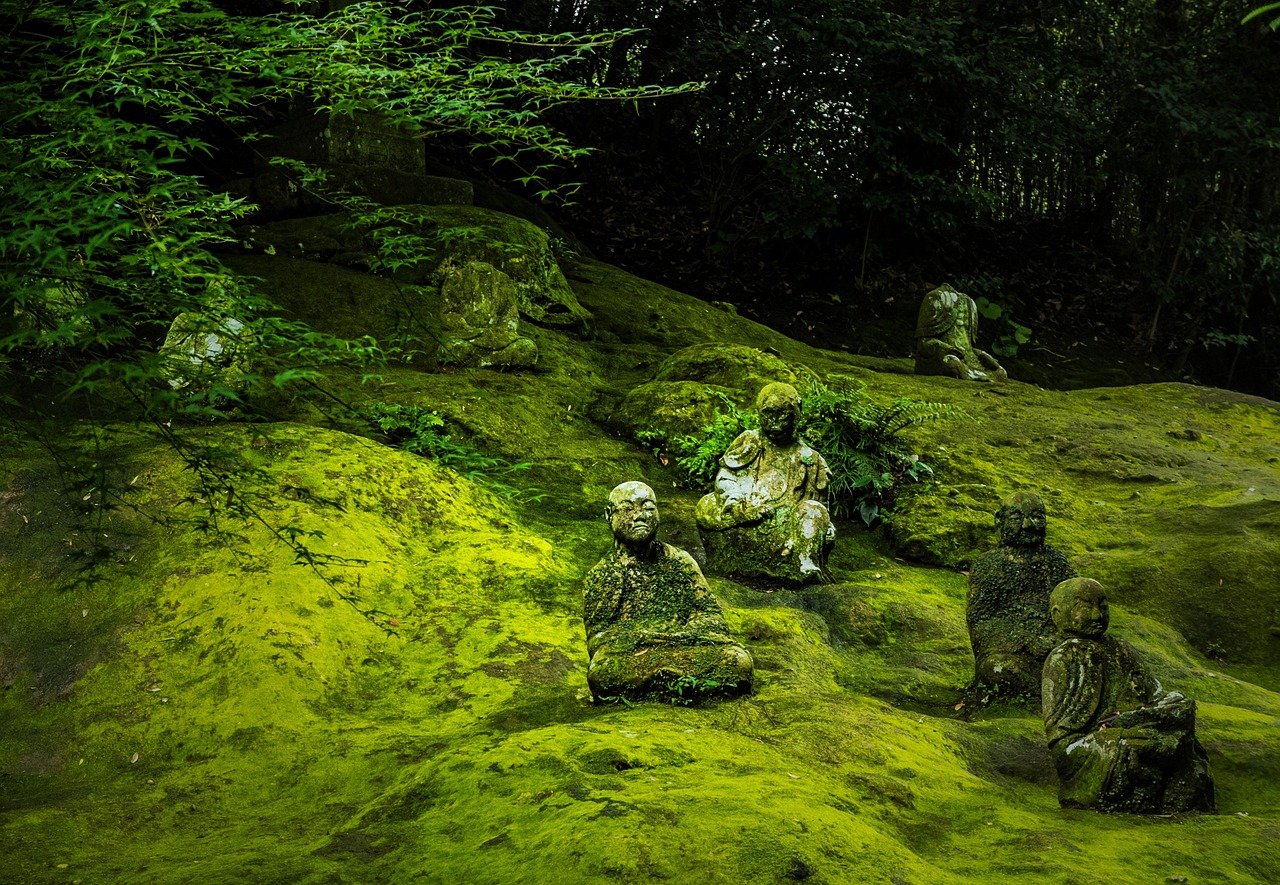
Spread of Buddhism
After embracing Buddhism, Ashoka was determined to spread the teachings of the Buddha far and wide, beyond the borders of his empire. His efforts in the were marked by diplomatic missions and emissaries sent to various kingdoms and regions, carrying the message of peace, tolerance, and moral conduct.
One of the key strategies employed by Ashoka was the establishment of Buddhist monasteries and centers of learning along trade routes and in major cities. These centers not only served as hubs for religious teachings but also facilitated cultural exchanges and the dissemination of Buddhist scriptures.
Furthermore, Ashoka sponsored the dispatch of Buddhist missions to neighboring regions such as Sri Lanka, Southeast Asia, and even as far as the Mediterranean. These missions played a crucial role in introducing Buddhism to new populations and fostering intercultural dialogue.
Through his unwavering commitment to the promotion of Buddhism, Ashoka laid the foundation for the religion's expansion and enduring presence in diverse societies. His legacy as a Buddhist monarch continues to inspire followers of the faith and scholars alike, underscoring the profound impact of his efforts in the propagation of Buddhism.

Legacy and Historical Impact
Exploring the life and reign of Ashoka, the Indian emperor who embraced Buddhism and promoted peace and social welfare across his empire, leaving a lasting impact on Indian history and culture.
Ashoka's legacy as a Buddhist monarch has had a profound impact on the history and development of India and Buddhism. His reign marked a pivotal moment in Indian history, where the principles of dhamma and social justice were prioritized over conquest and power. The influence of Ashoka's policies and beliefs extended far beyond his lifetime, shaping the cultural and religious landscape of not only India but also the wider Asian continent.
One of the most enduring aspects of Ashoka's legacy is his architectural contributions to Buddhism. Through his patronage, stupas, monasteries, and pillars were erected as symbols of his faith and authority. These structures not only served as places of worship but also as visual representations of Ashoka's commitment to spreading the teachings of Buddhism throughout his empire.
Despite the passage of time, Ashoka's historical impact remains a subject of debate among scholars and historians. The interpretation of his reign and the extent of his adherence to Buddhist principles continue to spark controversy and discussion. Some argue that Ashoka's conversion to Buddhism was merely a political move to solidify his rule, while others view him as a sincere proponent of peace and compassion.
Moreover, the spread of Buddhism beyond India's borders can be attributed in part to Ashoka's efforts. By sending emissaries and missions to neighboring kingdoms and regions, he played a key role in popularizing the teachings of the Buddha and establishing Buddhism as a major world religion. The influence of Ashoka's reign reverberated across time, contributing to the historical development of Buddhism in Asia and beyond.
Ashoka's legacy continues to be revered in modern times, with his emblem adorning the national flag of India as a symbol of unity and peace. His principles of non-violence and social welfare have inspired contemporary leaders and movements, emphasizing the enduring relevance of his teachings in a world marked by conflict and division.
1. What were Ashoka's major contributions to Buddhism?
2. How did Ashoka's conversion to Buddhism impact his governance?
3. What is the significance of Ashoka's rock edicts and pillars?
4. How did Ashoka's legacy influence the spread of Buddhism beyond India?
5. Why is Ashoka considered a pivotal figure in Indian history?

Architectural Contributions
One of the most enduring legacies of Ashoka the Great lies in his architectural contributions to the promotion of Buddhism and the display of his power and faith. Ashoka's patronage of Buddhist architecture resulted in the construction of numerous stupas, monasteries, and pillars, which served as symbols of his commitment to Buddhism and his authority as a monarch.
Stupas, such as the famous Sanchi Stupa, were monumental structures built to enshrine relics of the Buddha or commemorate significant events in his life. These architectural marvels not only functioned as religious sites but also as centers of learning and meditation for Buddhist monks and followers.
In addition to stupas, Ashoka sponsored the construction of monasteries, known as viharas, which served as residences for Buddhist monks and centers for religious teachings and communal gatherings. These monastic complexes played a vital role in the spread of Buddhism and the preservation of its teachings.
Furthermore, Ashoka's edicts and inscriptions were often engraved on pillars made of stone, such as the famous Ashoka Pillar at Sarnath. These pillars not only served as markers of his territorial conquests but also as platforms for proclaiming his adherence to dhamma (righteousness) and his commitment to social welfare.
The architectural achievements of Ashoka reflected his desire to promote Buddhism and uphold moral values throughout his empire. These structures stood as testaments to his reign and continue to inspire awe and admiration for their historical and cultural significance.

Historiographical Controversies
When delving into the historical accounts of Ashoka the Great, one cannot escape the web of controversies that shroud his reign. Historians have long debated the true extent of Ashoka's commitment to Buddhist principles and the impact of his policies on his empire. Some scholars argue that Ashoka's conversion to Buddhism was a strategic move to unify his diverse empire under a common moral code, rather than a genuine spiritual awakening. They point to his ruthless tactics in conquering territories before embracing Buddhism as evidence of his pragmatic nature.
On the other hand, proponents of Ashoka's devoutness to Buddhism highlight the radical transformation in his governance post-conversion. They argue that his rock edicts, which promoted non-violence, religious tolerance, and social welfare, reflect a sincere dedication to the teachings of the Buddha. However, interpreting these edicts and pillars can be challenging due to their cryptic nature and the lack of detailed historical records from that era.
Moreover, the historical accounts of Ashoka's reign are often colored by the biases and agendas of later chroniclers. Different sources present conflicting narratives of Ashoka's character, achievements, and motivations, leading to a fragmented understanding of this enigmatic monarch. The scarcity of contemporary sources further complicates efforts to separate fact from fiction in the study of Ashoka's legacy.
Ultimately, the historiographical controversies surrounding Ashoka the Great serve as a reminder of the complexities inherent in reconstructing ancient history. While modern scholars continue to unravel the mysteries of Ashoka's reign, the debates and divergent interpretations only add to the allure and intrigue of this legendary figure in Indian history.

Modern Reverence and Recognition
Even centuries after his reign, Ashoka the Great continues to be revered and recognized for his contributions to Indian history and culture. His legacy is deeply ingrained in the collective consciousness of the Indian people, with his emblem, the famous Ashoka Chakra, proudly displayed at the center of the Indian national flag. This symbol serves as a constant reminder of Ashoka's principles of peace, tolerance, and social welfare, which are considered foundational to the Indian ethos.
Furthermore, Ashoka's influence extends beyond national boundaries, inspiring contemporary leaders and movements around the world. His emphasis on non-violence, compassion, and ethical governance resonates with modern-day advocates for social justice and human rights. The principles of dhamma that Ashoka propagated continue to serve as guiding lights for those seeking to create a more just and harmonious society.
In addition to his emblematic presence on the national flag, Ashoka's legacy is also celebrated through various monuments and historical sites dedicated to his memory. The Ashoka Pillars, bearing his edicts and teachings, stand as enduring testaments to his reign and the values he espoused. These ancient relics not only attract tourists and historians but also serve as reminders of a bygone era when a monarch's commitment to welfare and righteousness could shape the destiny of a nation.
Frequently Asked Questions
- Who was Ashoka the Great?
Ashoka the Great, also known as Emperor Ashoka, was an Indian monarch who ruled the Maurya Empire from 268 to 232 BCE. He is renowned for his adoption of Buddhism and his promotion of peace and social welfare throughout his empire.
- What led to Ashoka's conversion to Buddhism?
Ashoka's conversion to Buddhism was influenced by the brutalities he witnessed during the Kalinga War, which deeply affected him. This pivotal event led him to embrace the teachings of Buddhism and adopt a more compassionate and ethical approach to governance.
- How did Ashoka promote Buddhism beyond India?
Ashoka actively promoted Buddhism beyond India's borders by sending emissaries and missions to neighboring kingdoms and regions. He erected rock edicts and pillars inscribed with Buddhist teachings to spread the message of dhamma and social justice.
- What is Ashoka's legacy and historical impact?
Ashoka's legacy as a Buddhist monarch left a lasting impact on Indian history and the development of Buddhism. His architectural contributions, rock edicts, and promotion of dhamma continue to influence the cultural and religious landscape of Asia.
- How is Ashoka revered in modern times?
Ashoka continues to be revered in modern times, with his emblem adorning the Indian national flag. His principles of non-violence, tolerance, and social welfare serve as inspirations for contemporary leaders and movements promoting peace and harmony.

